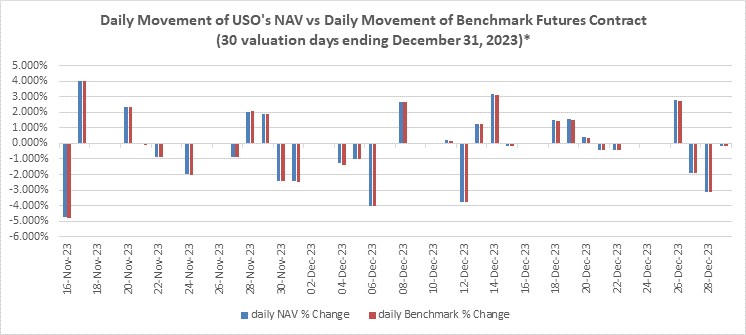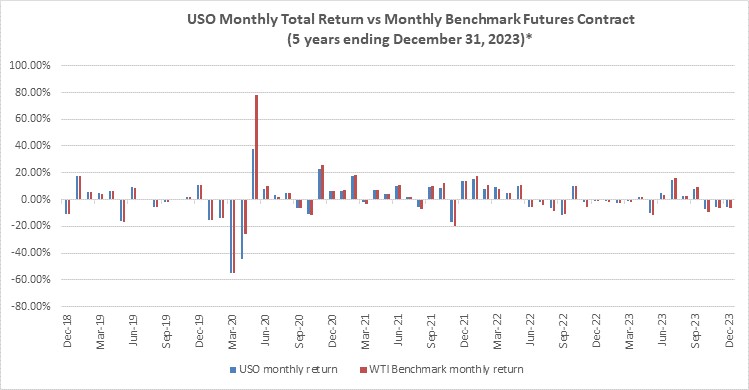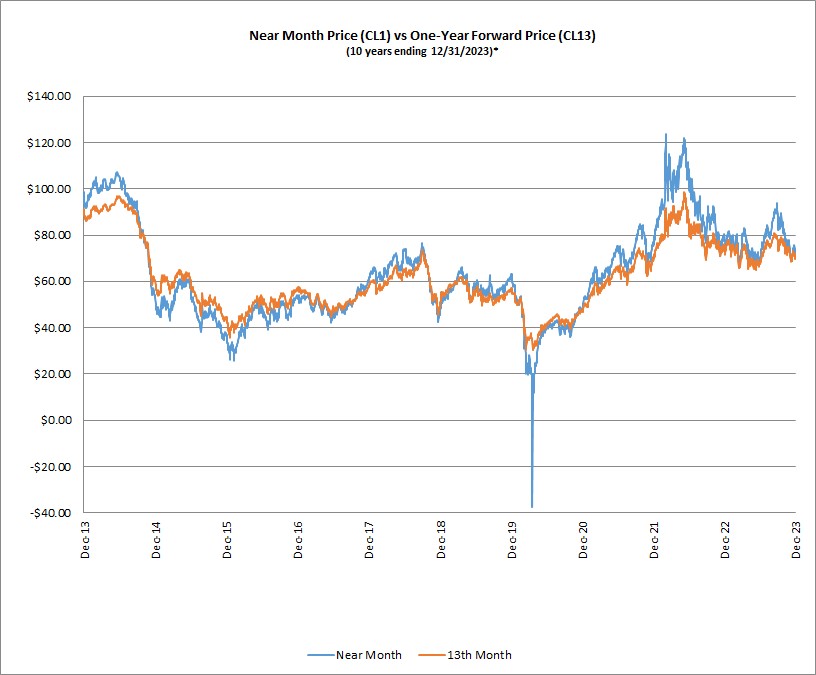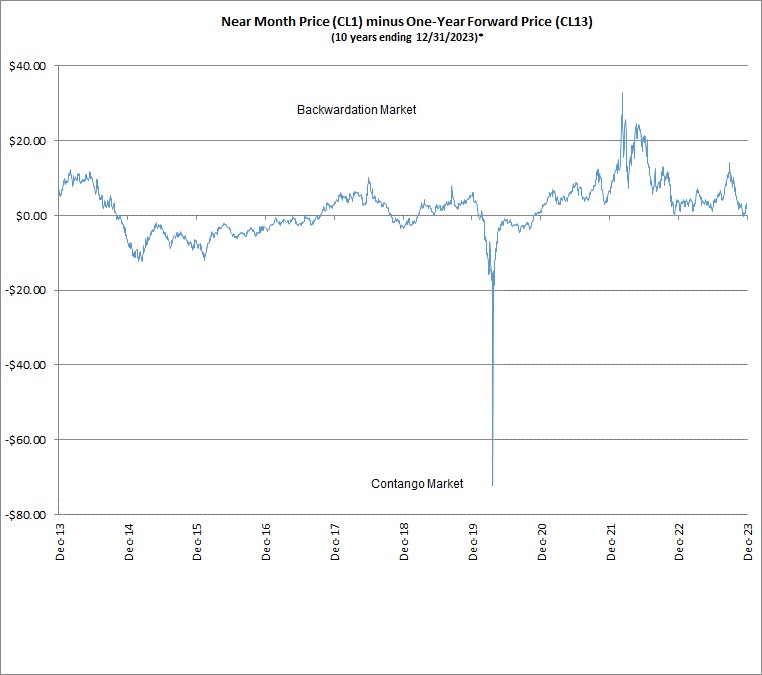The following chart shows, for the period ending December 31, 2023, the rolling 30-day average difference between USO’s NAV and the Benchmark Oil Futures Contract. This is measured by subtracting the return of the Benchmark Oil Futures Contract from the return on USO’s NAV for each of the last thirty business days, and then averaging those thirty differences. The calculation is repeated daily.
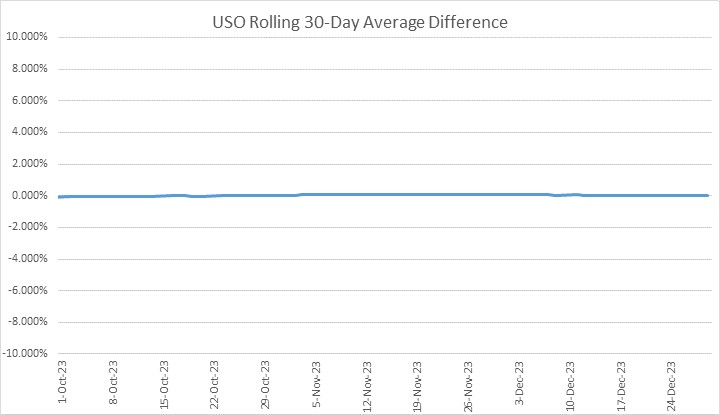
Prior to the Spring of 2020, USO achieved its investment objective by primarily investing in the Benchmark Oil Futures Contract and Oil Futures Contracts for light, sweet crude oil traded on NYMEX and ICE Futures with the same maturity month as the Benchmark Oil Futures Contract. In the Spring of 2020, significant market volatility occurred in the crude oil markets and the oil futures markets. Such volatility was attributable to the COVID-19 pandemic, related supply chain disruptions and disputes among oil-producing countries over the potential limits on the production of crude oil, and a corresponding collapse in demand for crude oil and a lack of on-land storage for crude oil. Certain circumstances resulting from such volatility caused USO to invest in Oil Futures Contracts other than the Benchmark Oil Futures Contract. In 2020, significant market volatility occurred in the crude oil markets and the oil futures markets. Such volatility was attributable in part to the COVID-19 pandemic, related supply chain disruptions and ongoing disputes among oil-producing countries over the potential limits on the production of crude oil, and a corresponding collapse in demand for crude oil and a lack of on-land storage for crude oil. These conditions severely limited USO’s ability to have a substantial portion of its assets invested in the Benchmark Oil Futures Contract and certain other Oil Futures Contracts of the same month, such as cash-settled, but substantially similar, oil futures contracts traded on ICE Futures (the “ICE WTI Contract”).
Accordingly, USO invested, and since then has continued to invest, in other permitted Oil Futures Contracts with expirations in later months than the Benchmark Oil Futures Contract. USO also invested, and has continued to invest, in other permitted investments, including Other Oil-Related Investments, including OTC swaps. In addition, during the Spring of 2020, USO had to rebalance and adjust the types of holdings in its portfolio more frequently than it had in the past.
Beginning with the monthly roll in September 2023 and ending with the monthly roll in January 2024, USO began transitioning its investment portfolio so that it primarily invests in Benchmark Oil Futures Contracts, consistent with USO’s investment strategy prior to the Spring of 2020. However, USO has had, and will continue to have, the ability to invest in Oil Futures Contracts beyond the Benchmark Oil Futures Contract and Other Oil-Related Investments, such as OTC swaps, and USO may make such investments if market conditions, regulatory requirements, risk mitigation measures (including those that may be taken by USO, USO’s FCMs, counterparties or other market participants), liquidity requirements, or other factors require USO to do so in order to meet its investment
56
